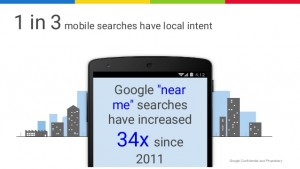
In Part 1 of this series, I talked about how I helped Matt, the CEO of an insurance company with a staff of 1,300, navigate through a widespread work-from-home burnout crisis in his company. I advised Matt that what he needs to do in order to defeat work-from-home burnout is to stop thinking of COVID as an emergency situation to be handled via operational tactics.
Companies need to approach COVID and the post-COVID world as our new abnormal reality, and use a strategic approach to survive and thrive in this new world. That includes a strategic re-evaluation of your internal structure, culture, and norms for a much more virtual environment for the foreseeable future. One cornerstone, and the crucial first step, of this re-evaluation is to be able to identify key issues that could lead to work-from-home burnout.
If you enjoy video, here’s a videocast based on this blog:
And if you like audio, here’s a podcast based on the blog:
Or simply read onward!
In the case of Matt’s company, as with many other businesses as well, the issues ranged from those that stemmed from an individual’s personal circumstances to those that originate from the workplace itself.
The most significant problems I’ve identified include the deprivation of our basic human needs for meaning, purpose, connection, and the chance to build trust with workmates. Working from home also deprives employees of the chance to be mentored by senior colleagues.
Then, there’s the “Zoom fatigue” brought on by the stress and feeling of drain due to technology failing to get our basic need for connection met. This issue is true for the formal and official aspects of work as well as the informal ones, such as when companies use videoconferencing for happy hours and other virtual social gatherings.
There are also other important pieces, such as employees’ lack of skills in effective communication, collaboration, and technology tools in virtual work. Employees may also be affected by pandemic-related mental health challenges, subpar work-from-home environments, poor work/life boundaries, as well as other COVID-related pragmatic challenges.
To efficiently address these issues, I urged Matt to take 21 steps that organizations can use to defeat work-from-home burnout and Zoom fatigue.
A Strategic Approach to Defeat Work-From-Home Burnout and Zoom Fatigue
The first step to fixing these problems involves a commitment to a strategic shift. You’ll need to reframe your company culture – and policies – from “emergency mode” of working from home to remote work being the new normal. That includes not only the many, many months of the pandemic, but after the pandemic as well, with many staff working full-time remotely while others work in the office a couple of days a week.
Start by stepping away from your existing structure of, your culture around, and your assumptions about, remote work. People have a tendency to stick to their pre-existing beliefs based on their initial information and first impressions, even when strong new evidence shows that these beliefs are erroneous, such as how we set up remote work. Behavioral economists and cognitive neuroscientists call this mental blind spot anchoring. Anchoring is one of many dangerous judgment errors, or cognitive biases, that harm the decision-making process in business and every area of life. Doing so has caused many bad decisions during the pandemic, and you want to avoid such anchoring as you re-envision working from home.
Here are the specific steps I suggested for Matt’s company and the other companies who I helped strategically realign their culture around a much more virtual work environment, both in the pandemic and the post-pandemic world:
- Gather thorough information from your employees about their virtual work challenges. Your organization might find that work/life boundaries pose a particular problem for your staff, while other companies may see different areas as a bigger problem. Run surveys and do focus groups and one-on-one interviews to diagnose the extent and impact of each potential virtual work issue in your organization in particular.
- Develop metrics and determine a baseline. While running the surveys, make sure to get both quantitative and qualitative data. Structure the surveys so that you can use the quantitative data to establish clear metrics on all relevant aspects of work-from-home challenges. Experiment first with different ways of asking questions to make sure that the responses you gather actually get at the issues you’re trying to measure. Then, make a broad survey across your whole organization to establish a baseline for the current state of virtual work. You’ll use this baseline to evaluate the interventions you’ll make as part of your strategic shift. After all, as the founder of management consulting Peter Drucker once said, “what gets measured, gets managed.”
- Educate your employees about the deprivations of needs. In my experience, the vast majority of employees fail to recognize the psychological reasons for why they feel much less fulfilled and why their expectations aren’t being met. A critical early intervention involves educating them about this topic. Doing so goes a long way toward lowering their expectations and reducing their sense of frustration and discontent.
- Intentionally cultivate a sense of meaning and purpose in your employees. The office environment naturally facilitates a sense of meaning in the workplace. The sense of place, the patterns of daily work, the social environment and work culture all help employees develop a personal narrative and sense of identity tied to work. However, the virtual environment removes all of these natural ways of building meaning and purpose. To address this problem, you need to help your employees intentionally develop a sense of meaning and purpose in the virtual workplace. That includes using an evaluative tool to establish a current baseline of meaning and purpose, self-reflective activities on identity and personal narratives as tied to one’s work, and many other practices such as connecting your work to something bigger than yourself.
- Replace square pegs with round pegs for round holes. To cultivate human connection and a sense of trust, you need to replace bonding activities from office culture with native virtual bonding activities. These activities should be specifically distinct from office culture-based ones, so that our gut reactions don’t have elevated expectations and they should also take advantage of digital technology.
- For instance, here’s an activity that almost all of my clients implement, namely a “Morning Update” for each 4-8 people team inside their company. They establish a separate space in their collaboration software dedicated to this topic. Every morning, all team members send a message answering the following questions: 1) How are you doing overall? 2) How are you feeling right now? 3) What’s been interesting in your life recently outside of work? 4) What’s going on in your work: what’s going well, and what are some challenges? 5) What is one thing about you that most other team members do not know about? Employees are encouraged to post photos or videos as part of their answers. They are also asked to respond to at least three other employees who made an update that day. Note that most of these questions are about life outside of work, and aim to help people get to know each other. They humanize virtual team members to each other, helping them get to know each other as human beings, or keeping that connection if they had already known each other from in-office collaboration. There’s also one work question, focusing on helping team members learn what others are working on right now. That question helps them collaborate together more effectively.
- Another activity adopted by over 80% of my clients involves establishing another separate space for each team called “Life Stuff.” There, anyone who feels inspired can share about what’s going in their life and respond to others who do so. The combination of mandated morning updates combined with the autonomy of the “Life Stuff” channel provides a good balance for building relationships and cultivating trust that fits the different preferences and personalities of the company’s employees.
- Encourage other informal communications in the workplace. For example, the typical presumption during virtual meetings is that you should pay full attention to the speaker. Yet during in-person meetings, you actually engaged with those around you, communicating through a brief aside or a look that conveyed your opinion on what the speaker was saying. You can encourage your employees to do the same through texting or private Zoom messages or other means.
- Encourage them to get their needs met elsewhere. Some of their needs, such as for physical social connection, you won’t be able to replace. Encourage them to get their needs met elsewhere in their lives, while staying safe in the pandemic.
- Provide professional development in effective virtual technology use. Before providing professional development in various aspects of virtual work, highlight the broader strategic shift to virtual work and the benefit of long-term professional growth for each team member’s effectiveness and productivity. That way, you’ll get buy-in from your team for investing their efforts into training. Remember to keep training hours and targets for technology use separate from regular working hours and targets so that team members won’t feel pressured to rush through the training just so they can meet their productivity targets. The same applies to all other training, of course.
- Provide professional development in effective virtual communication. There are numerous tips and tricks of effective virtual communication that you need to help your team develop. Here’s an example of an easy tactic for improving virtual communication to connect with and influence others during videoconferences that I bet even the vast majority of your sales professionals fail to practice. When you speak, you need to look at the video camera, not at the people in the small squares on the screen. When you don’t look at the camera, you’re not making eye contact with those at the other end of the videoconference, and it truly shows in your weakened ability to connect with and influence them effectively. You’ll want all your team members, and especially those in sales and leadership positions, to learn how to do this effectively. The same goes for other forms of virtual communication growth.
- Provide professional development in effective virtual collaboration. Development in emotional and social intelligence as adapted to virtual settings will help employees collaborate much more effectively. For example, they need to ask intentionally how other people feel, not think, about their proposed ideas. Previously, in the office, people’s feelings came through easily through body language and tone of voice. Of course, that doesn’t happen in virtual work environments. So you need to teach people to take deliberate steps that would evaluate the temperature of the room in order to improve virtual collaboration. Many other techniques exist for effective virtual collaboration.
- Initiate virtual mentorship programs. To address the loss of mentoring support, pair up your junior and/or younger members with senior staff. This will be good not just for the guidance that senior mentors can give, both regarding specific work tasks as well as how to handle major economic turmoil, such as the financial crash of 2008. It will also help address the lack of social connection in a virtual workplace, for both senior and junior employees. Moreover, it will help the senior employees learn how to handle technology better, since younger employees tend to be more savvy with digital tools. Senior employees often feel embarrassed about a lack of capacity with digital tools; informal opportunities to ask their mentees for advice help address this problem.
- Establish digital coworking. Encourage all members of a team to spend an hour or more per day coworking digitally with their teammates. What this means is getting on a Zoom or Microsoft Teams call, turning microphones off but leaving speakers on with video optional, and then working on your own tasks. This experience replicates the benefit of a shared cubicle space, where you work alongside your team members, but on your own work. You get to bond with each other, chat about how things are going in work and life, ask and answer quick clarifying questions, and mentor each other as needed. However, note that this isn’t meant to be a work meeting, and you shouldn’t intend to have any lengthy conversations during it; do a separate call with a teammate if you need to have a longer chat. If you have specific teammates with whom you’re collaborating more intensely, you should do a coworking session with them daily in addition to the broader coworking with the team as a whole.
- Mentors and mentees should also do a co-working session with each other daily. Again, this session shouldn’t be intended as a meeting, but a time to work on your own tasks, while asking clarifying questions as needed.
- A special case of digital coworking involves sales teams. There’s a lot of benefit to sales teams doing outbound or inbound sales calls together. You get to learn from overhearing how other sales agents handle prospect questions, overcome objections, and close the sales. The pandemic has prevented such learning; digital coworking offers an effective way to address this problem. It takes a bit of practice and technological know-how, but you can learn to adjust audio so that you can keep your microphone on during a coworking session in which you and others handle prospect calls and learn from each other effectively.
- Physical and mental breaks. There’s an unhealthy expectation that once you start your workday in your home office chair, that you’ll keep working for all the time you’re sitting there (except for your lunch break). That’s not how things worked in the office, which had physical and mental breaks built in throughout the day. You took 5-10 minutes to walk from one meeting to another or you went to get your copies from the printer and chatted to a coworker on the way. Those and similar physical and mental breaks, research shows, decrease burnout, improve productivity, and reduce mistakes. That’s why you should strongly encourage your employees to take at least a 10-minute break every hour. At least half of those breaks should involve physical activity, such as stretching or walking around, to counteract the dangerous effects of prolonged sitting.
- Funding for working from home. Over a year into the pandemic, way too many employees still use their kitchen table for office space and rely on 5-year-old laptops. You need to provide a separate budget for your employees to address this problem. That can include funding a comfortable and well-equipped home office, or it can mean paying for their membership in a coworking space if they have no adequate room in their home or if they feel unable to work effectively without others around them. Provide extra financial support for working mothers, due to their particularly difficult situation. Doing so will greatly improve productivity and help reduce burnout among your employees.
- Ensuring accountability to leaders and peers. The goal here is to have each member of a 6-8 person team provide a weekly report of their progress that’s visible to their whole team, and then discuss it privately with the team leader. The report should include sections on their own work progress, as well as on their collaboration with teammates. The expectation should be that other team members read each others’ reports and address any issues that they see in their own private conversations with the team leader. Doing so balances privacy, peer-to-peer accountability, and chain-of-command accountability.
- For example, here’s a typical weekly report that my clients tell me works quite well for nearly all of their teams. Each employee should send a weekly report to their leader listing: 1) Their goals for the past week and how they did on meeting these goals, as well as their goals for next week and how they plan to achieve them; 2) The challenges they faced and what they did to overcome the challenges, and what challenges they expect to face next week and how they plan to address those; 3) What they did for professional development and what they plan to do next week; 4) How well they collaborated with their teammates and how well their teammates collaborated with them, and how they plan to work with their teammates next week; 5) An overall quantitative self-evaluation of how well they performed for the week, and their plans for improving their performance next week. An example of a quantitative evaluation that works well involves a range from 0 to 4, with 0 = greatly below expectations, 1 = somewhat below expectations, 2 = meeting expectations, 3 = somewhat exceeding expectations, and 5 = greatly exceeding expectations. Of course, the weekly update should reference the previous week’s update and compare the goals set with goals achieved.
- Then, the leader would meet with their subordinate, and discuss the weekly update. They’d ask clarifying questions and suggest changes as needed, including addressing any collaboration challenges with other teammates to ensure effective peer-to-peer accountability. Finally, the leader would give their own quantitative evaluation for the week. Naturally, unexpected circumstances should not result in serious deductions in the quantitative evaluation; the key is how the direct report responded to these circumstances. These quantitative evaluations should then feed into the quarterly performance review, determining salary and promotion.
- Reduce unnecessary meetings. Too many Zoom meetings happen because leaders want their team members to feel connected, and yet they end up disappointed due to elevated expectations. Virtual coworking provides a much better sense of connection without the elevated expectations. Only schedule meetings where topics need to be hashed out in synchronous discussion; reports and updates can be sent in text or recorded video or audio form to be reviewed and responded to later.
- Weekly check-in and progress report evaluation. While you should avoid unnecessary meetings, leaders should set aside time to check individually on their direct reports in a 15-30 minute videoconference. This should include 5-10 minutes of just catching up and talking about matters that would otherwise be uncomfortable to talk about in a group setting. Check in particular on how they’re doing with virtual work, especially during the transition period of this strategic shift. The second part of the meeting should involve 10-20 minutes going over their weekly progress report.
- Support work/life boundaries. You can safely assume that a lot of your employees are feeling worried about their jobs due to the current economic uncertainty. This might lead to them taking on an unreasonable workload or extended working hours despite feeling burned out. And some of your mid- and lower-level managers might be encouraging or even mandating such behaviors. It falls to senior leaders, then, to reinforce the boundaries. That includes regular public reminders to employees to stick to preset hours and discouraging the sending of any form of communication after hours. It also includes communicating to mid- and lower-level managers that you’re serious and won’t tolerate them encouraging burnout to meet their goals, and asking them to speak privately with and discourage any employees who regularly work after hours for hourly employees, or excessive hours for salaried employees or those with flexible schedules. The only exception should be an unexpected emergency that shouldn’t happen more often than once per month. Note: if employees are underperforming in their weekly reports, it doesn’t mean they should simply work more and violate these boundaries. It might mean they need more professional development or better equipment for remote work. It might also mean that they’re overloaded with tasks that should be handed off to someone else. It might even mean they’re no longer the right fit for the job. What you don’t want is someone burning the candle on both ends, burning out and resigning, and then have no one left to handle their mountain of tasks.
- Encourage time off. Just because people are working away from a physical office doesn’t mean that it’s any more relaxing. Encourage your team members to take some vacation time, even if it’s just for a staycation or somewhere they can have some socially-distanced leisure time. Leaders should take time off as well and be a role model in work-life balance. This will send the message to your employees that it’s perfectly fine to take some time to recharge.
- Advocate for mental health screenings. Be part of efforts to destigmatize getting mental help. Make sure to regularly inform and remind your team members about the mental health benefits provided by your company, such as EAP, as well as free and anonymous mental health screenings available from Mental Health America and elsewhere. Learn about and look for signs of mental health challenges in your weekly check-ins. Also educate your team about virtual support groups that they might find beneficial, particularly those addressing any concern that might be over-represented among them.
- Switch to flexible shifts. After you get a better handle on reasonable productivity loads and your team members’ personal circumstances relevant to their roles, consider switching people to flexible working schedules whenever possible. This will allow employees to be able to efficiently integrate their personal and work spaces – as well as the routines involved – which will significantly cut down on unnecessary stress. Of course, such flexible shifts need to allow for effective coworking time.
- Integrate all of these initiatives over time, not immediately. Start with education about basic needs. Then, proceed to whatever seems most appropriate and urgent for your company based on your internal surveys. As part of doing so, get feedback from lower-level staff on what they see as the most important priorities, both for the value of their information and to get their buy-in from the perspective of change management. Use metrics to determine which of your interventions works and which might need revisions. As you pick lower-hanging fruit, start implementing the more challenging interventions.
Implementing the Strategic Shift to Virtual Work
We started the strategic shift to virtual work in Matt’s company by using an internal survey conducted in mid-October 2020 to develop a baseline for virtual work improvements and determine the biggest challenges facing employees. Not surprisingly, work/life boundaries emerged as the top issue. Deteriorating teamwork proved the second biggest challenge; on a related note, the third was a decrease in mutual trust. So we implemented interventions in that order.
After running some focus groups to get buy-in and feedback from lower-level staff, the company announced a strategic virtual work initiative. That included offering most staff the flexibility to stay virtual full-time even after the pandemic, and only come in for a quarterly conference once the pandemic was over; a new policy of hiring employees for most positions across the country, not only in the region around the office, as long as they were willing to attend the quarterly get-togethers after the pandemic; downsizing office space and hot-desking for those who still wanted or needed to come in occasionally once it’s safe; and a budget for home office improvements and/or coworking space payments.
Next, the company scheduled training to educate employees about the deprivations of needs. Then, HR rolled out policies encouraging stronger work/life boundaries and advocating for appropriate time off. After that, the company addressed teamwork challenges through professional development in virtual collaboration, as well as having leaders focus on improvements in peer-to-peer accountability. The next step involved rebuilding trust through virtual coworking and via establishing “Morning Updates” and “Life Stuff” channels in the company’s Slack collaboration software for each team.
Other improvements followed in the order that responded most to the needs of employees and the company’s situation. The HR department ran internal surveys monthly, adjusting the implementation as needed to address challenges. For instance, the senior leadership had to reinforce to mid- and lower-level managers, several times, the importance of work/life balance and time off; HR ended up having to provide training to and monitoring of a number of managers to improve compliance with this policy.
By the time my engagement with Matt’s company ended in January 2021, survey results showed that employee satisfaction with virtual work improved by 27%, their comfort with work/life boundaries grew by 32%, and confidence in their team members rose by 18%. More importantly, bottom-line figures improved as well: employee retention grew by 17%, and customer complaints dropped by 14%, while healthcare costs dropped by 8%, and productivity increased by 9%.
The latter figure proved surprising for many mid- and lower-level managers, and even some senior executives. Many thought that productivity would drop due to more time off and better work/life boundaries. They felt skeptical of my claims about the extensive research on the benefits of work/life boundaries, breaks, and time off for productivity and health. It’s a frequent tendency I observed: many managers, especially older and more experienced ones, feel extensive research on best practices shown effective elsewhere for some reason doesn’t apply to their context. However, once the findings from their own workplace bear out the research, the skepticism eventually dissipates, as it did here.
From a qualitative standpoint, while Matt’s company wasn’t able to retain some of their key talent due to these problems, they were able to save many major accounts due to the efficient turnaround. Matt also told me privately that the increased trust and transparency in their workplace empowered the executive team to make better-informed decisions and roll out more appropriate initiatives, which he felt would attract key talent and clients in the long run.
Conclusion
Work-from-home burnout is a serious issue that needs to be addressed strategically. You need to reframe your company culture and policies from remote work as an emergency mindset to remote work being the new normal, and support your employees in this strategic shift.
Key Takeaway
Protect your company from the disastrous effects of work-from-home burnout and Zoom fatigue by a strategic shift toward virtual work being the new normal rather than an emergency measure
Questions to Consider (please share your answers below)
- What does your company currently do to deal with work-from-home burnout and Zoom fatigue?
- Where might you do a better job of helping your team members deal with work-from-home issues related to mental health and professional development?
- Which next steps will you take based on reading this article?
Image credit: VinzentWeinbeer/Pixabay
Originally Published at Disaster Avoidance Experts on March 23, 2021
Business & Finance Articles on Business 2 Community
(51)
Report Post





